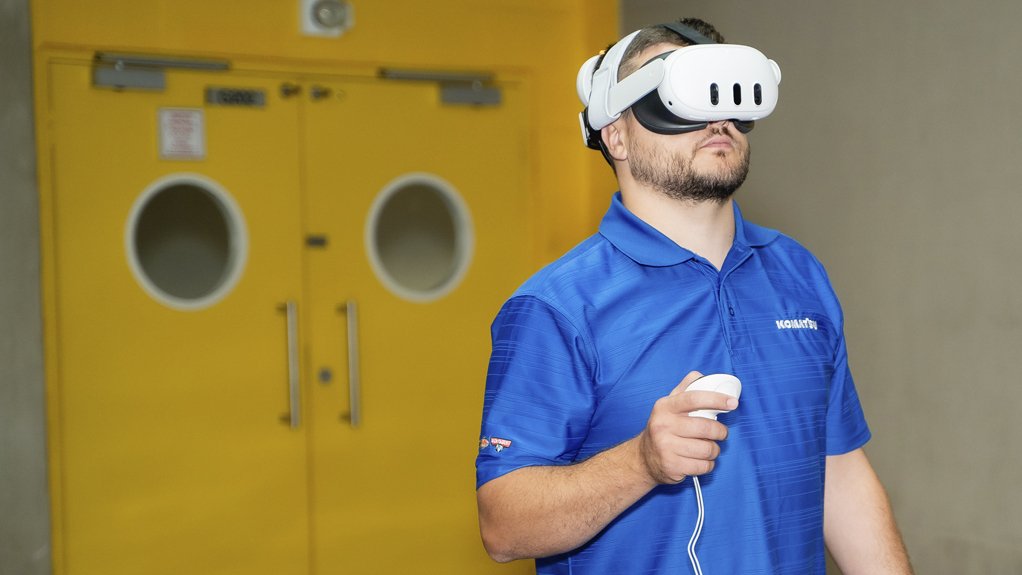As the mining industry moves towards adopting Fourth Industrial Revolution (4IR) technologies through increased automation and data-driven decision-making, mining consulting company Baletsema Mining Services chief growth officer Bokang Kelepa says the company has played a key role in promoting 4IR through its technology-driven solutions and industry engagement.
Established by two mining engineers with over 35 years of combined experience, the company has identified and implemented technologies from other industries to improve mining processes, he tells Mining Weekly.
One of its key initiatives is the yearly 4IRInMining Seminar, launched in 2019, which brings together stakeholders from academia, industry, labour and government to discuss technological trends and their impact on the sector.
The yearly event has grown organically, hosting 400 participants and being supported by industry organisations such as the South African Colliery Managers Association, Association of Mine Managers of South Africa and the Mine Professional Associations Secretariat.
As underground mining continues its digital transformation, Kelepa emphasises that the industry’s focus should remain on safety, productivity and workforce adaptation, which he says, will ensure the long-term success of 4IR integration and, thereby, ensure that mining operations remain competitive and sustainable in the future.
Baletsema has successfully introduced a range of 4IR solutions to Tier 1 mining companies, offering advanced technologies that enhance operational efficiency, safety and decision-making.
Among these solutions are advanced drilling techniques supported by data analytics, which provide real-time insights for improved planning and decision-making, while using drones in underground and opencast operations offers high-resolution imaging, 3D mapping and structural assessment capabilities.
Baletsema’s Matrice 350 RTK (M350 RTK) drone – equipped with thermal and red-, green- and blue-light wavelength cameras – is used for asset inspections, corrosion monitoring, blast monitoring and tailings dam analysis.
For 3D light detection and ranging scanning, Baletsema uses the M350 RTK with a Hovermap simultaneous localisation and mapping scanner for applications such as high-wall inspections, topographic surveys, structural integrity assessments, stope monitoring and volumetric analysis of stockpiles.
Baletsema also provides solutions such as the Level 9 collision avoidance system (CAS) using advanced driver assistance systems mining technology, ensuring mining vehicles avoid collisions through multiple sensors.
Safety in 4IR
A major focus area for 4IR implementation is that of mine safety, particularly in CAS integration and personnel tracking.
Kelepa specifically highlights the enforcement of Level 9 CAS in 2024, under the Mine Health and Safety Act, which requires mining vehicles to autonomously stop when detecting a hazard.
“Baletsema has supported mines in adopting this regulation by deploying advanced sensor-based systems that enhance workplace safety,” he comments.
Wearable technology has also gained traction, driven by the need for improved tracking of underground workers.
The 2016 Lily mine tragedy in Barberton, Mpumalanga – where a collapse of the crown pillar between underground levels 3 and 4 caused the roof to cave into the mine’s old workings, trapping miners – underscored the importance of real-time location tracking, Kelepa notes.
Consequently, regulations now mandate the use of ground-penetrating technology capable of detecting signals through dense rock, ensuring faster emergency response and enhanced operational oversight, should a similar incident occur in the future.
“Beyond safety, these wearables offer productivity benefits by monitoring workforce distribution and skill use, allowing companies to optimise human resources,” he adds.
However, insights from the latest 4IRInMining Seminar, held in November 2024 at the University of Johannesburg, indicate that while the adoption of 4IR is accelerating, challenges remain.
A key concern raised at the event was the lack of investment in research and development in sub-Saharan Africa.
“Limited local innovation has led to reliance on imported technologies and expertise, placing domestic industries at a disadvantage,” Kelepa says.
The seminar also highlighted the growing automation of routine tasks, with some South African gold mines already operating multiple machines remotely from surface control rooms.
In addition, Kelepa stresses that, despite significant progress, the integration of 4IR technologies faces resistance from older workers, owing to concerns over job security.
Consequently, he advises that retraining programmes – incorporating AI, augmented reality and virtual simulators – in partnership with training institutions and consulting firms, are needed to align the workforce with digital transformation.
Further, he points out that universities are updating their curricula to include 4IR technologies, ensuring that graduates enter the workforce equipped with relevant expertise.
While the high cost of implementing and maintaining new technologies presents barriers, increased competition among original-equipment manufacturers is driving price reductions and broader accessibility.
Production efficiency has been another area of concern, as some automated systems initially restricted operational flexibility, but Kelepa emphasises the need for mines to view 4IR solutions as part of a comprehensive production system rather than isolated interventions.
He, therefore, advocates for stakeholder engagement, particularly with organised labour, to ensure smooth transitions and reduce disruptions. ![]()






